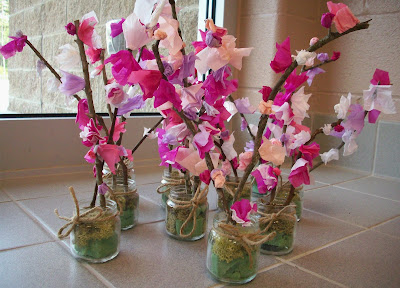Materials:
Colored paper
Colored string
Black washable marker
Small beads
White paper
Chalk pastel
Glittered or shiny paper
1. You can guide the students in drawing an elephant, or provide a template.
2 Draw the elepant, about 10 inches long.
3. Carefully cut out the elephant.
4. Outline the elephant with black marker, like Crayola. Don't forget to outline the ear. Add some tiny lines on the trunk for wrinkles.
5. Use a wet brush over the marker outlines to produce a watercolor effect.
6. Pre-cut strips of paper for the floor in various colors, about 3 in.wide
7. Let students choose a floor color and background color of paper. Glue floor piece onto background piece.
8.. Glue strips of paper onto background for stripes.
9. Glue on elephant, except for front foot.
10. Cut out ball and scalloped border piece. Provide template for the scalloped piece.
11. If desired, stick on pop dots, then glue on scalloped piece for a pop out effect.
12. If desired place a pop dot under the ball for pop out look. Glue on.
13. Cut a blanket from glittered or glossy paper. Decorate with beads or sequins.
14. Cut string into small pieces, glue on blanket for fringe.
15. Shade the floor at the top slightly with a chalk pastel, blend with fingers.
16. Glue colored dots on scalloped awning















































